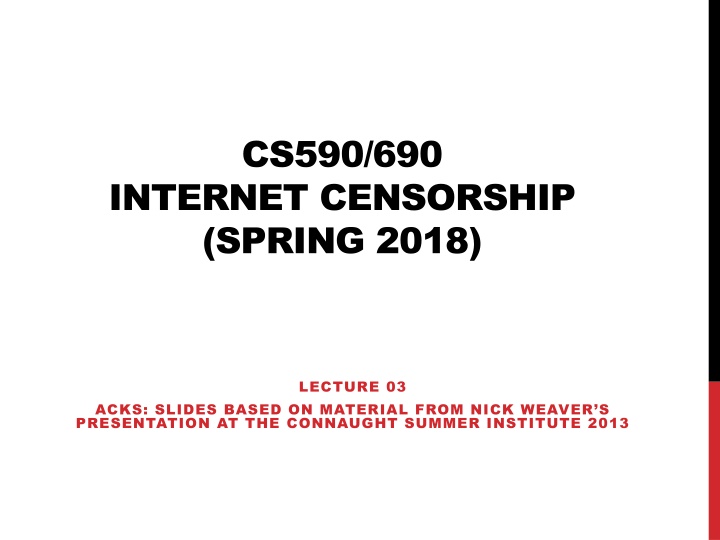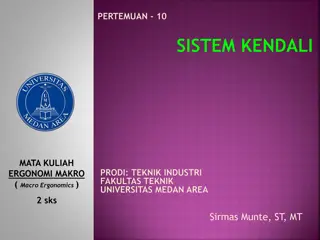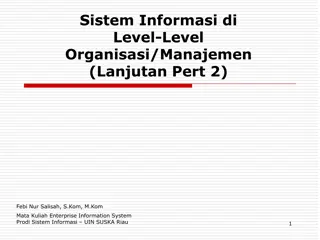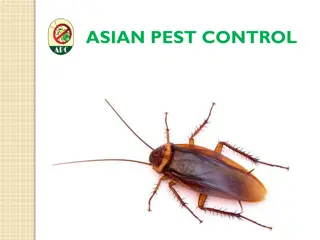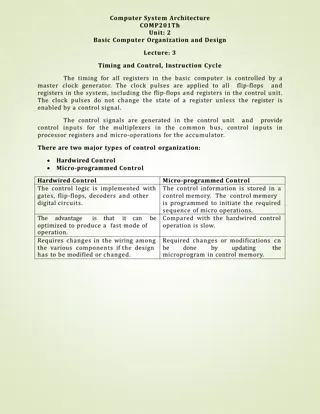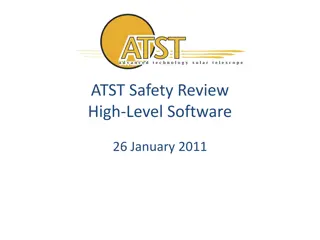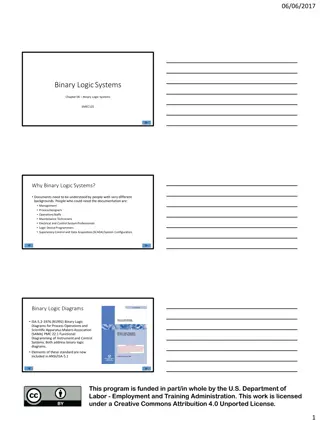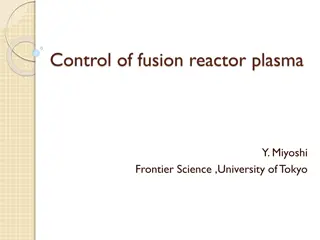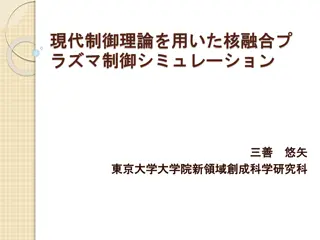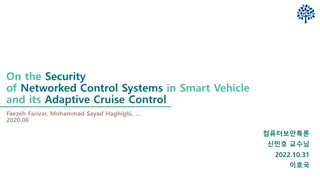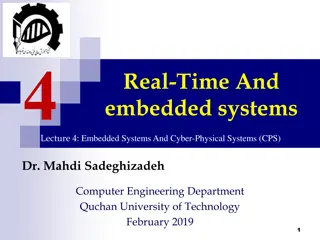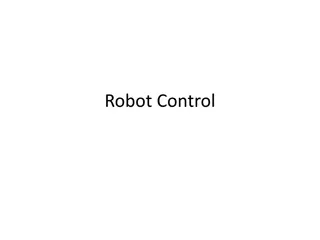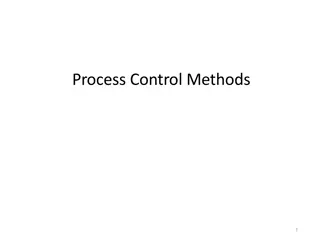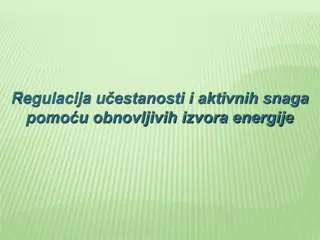Introduction to Control Systems at Al Mustakbal University
This course at Al Mustakbal University delves into the fundamentals of control systems, covering topics such as open loop and closed loop systems, design methodologies, mathematical modeling, Laplace transforms, transfer functions, and stability analysis. Through theoretical and practical lectures, students gain insights into control theory and modern engineering practices, with a focus on applications in electrical and mechanical systems. The course emphasizes the importance of MATLAB proficiency, quizzes, lab work, midterm and final exams to assess understanding and practical skills.
Download Presentation

Please find below an Image/Link to download the presentation.
The content on the website is provided AS IS for your information and personal use only. It may not be sold, licensed, or shared on other websites without obtaining consent from the author.If you encounter any issues during the download, it is possible that the publisher has removed the file from their server.
You are allowed to download the files provided on this website for personal or commercial use, subject to the condition that they are used lawfully. All files are the property of their respective owners.
The content on the website is provided AS IS for your information and personal use only. It may not be sold, licensed, or shared on other websites without obtaining consent from the author.
E N D
Presentation Transcript
CS590/690 INTERNET CENSORSHIP (SPRING 2018) LECTURE 03 ACKS: SLIDES BASED ON MATERIAL FROM NICK WEAVER S PRESENTATION AT THE CONNAUGHT SUMMER INSTITUTE 2013
WHERE WE ARE Last time: Background on Internet protocols/routing Censorship at the network layer. Questions?
OVERVIEW Block IP addresses IP layer Disrupt TCP flows Today TCP (transport layer) Many possible triggers Block hostnames DNS (application layer) Disrupt HTTP transfers HTTP (application layer)
TCP: TRANSMISSION CONTROL PROTOCOL Source Port Sequence Number Acknowledgement Number P A U E N C Destination Port OFF Z R S F Window Size Urgent Pointer Checksum TCP is used for reliable, in-order communication Connection established using a three-way handshake All data is ACKnowledged If no ACK is received packets will be resent Connection normally closed with a FIN (finish) packet Indicates that this side has no more information to send Connections can also be closed with a RST (reset) packet Indicates a problem: both sides should stop communicating Some software makes liberal use of RSTs.
WHY INJECT TCP RESET PACKETS? A TCP Reset (RST) tells the other side of the connection: There will be no more data from this source on this connection This source will not accept any more data, so no more data should be sent Once a side has decided to abort the connection, the only subsequent packets sent on this connection may be RSTs in response to data. Once a side accepts a RST it will treat the connection as aborted but RSTs are quite common, 10-15% of ALL flows are terminated by a RST rather than a FIN For HTTP, it can be over 20%: Web servers/browsers often time out with RST instead of FIN Thus we cannot treat RSTs as adversarial
TYPES OF CENSORS Last time we discussed IP blocking via ACLs which is an example of an in-path censor. Censors can also operate on-path: a wiretap, (intrusion detection system (IDS), deep packet inspection (DPI)) + attached network connection Censor can see all the packets Censor can add their own packets through packet injection Censor cannot remove packets Can censor: DNS requests (by injecting bogus replies) Web requests to given hosts (including HTTPS) Web requests over HTTP for forbidden content Latter two possible via injecting TCP RST packets!
WHY ON-PATH CENSORS? In-path device must process the traffic If they fail, they fail closed (connection gone!) On-path devices are safer Tapping a link is safe (in network operator terms) Easy to parallelize (just mirror traffic to more filters) Less disruptive to install and use Limitations: Can t censor single replies Censorship is always detectable Censor cannot perfectly mimic the other endpoint.
DETECTING ON-PATH CENSORSHIP Not only is the act of censorship detectable, the mechanism, is detectable Since censor creates new packets but can t remove existing packets Since the injected packets can be identified, fingerprinting is also possible. Using packets which trigger censorship but with a short TTL can localize the censor in the network Leads to tricky cross-layer network measurements (easier with DNS) Detection limitation: Can only detect an on-path censor when it is active A censor which doesn t create an effect on measured traffic is not detectable E.g., DPI used for surveillance
RACE CONDITIONS: DATA AFTER RESET TCP packets are tracked by sequence numbers The next packet s sequence number should be the previous packet s sequence number plus the packet length What is a sender is still sending data when the RST is injected? The receiver will see both a reset and a subsequent data packet, where the packet s sequence number + length > the reset packet s sequence number
RACE CONDITIONS: DATA AFTER RESET Such a packet arrangement is out of specification No TCP stack should generate such a sequence! It would imply that the stack decided to abort the connection yet keep sending anyway Data after RST? Doesn t make sense! Web Server (208.80.154.238)
RACE CONDITIONS: RESET AFTER DATA What if the reset injector is just slow? It takes time to determine that a flow should be blocked in the mean time traffic is flying by! Result is a reset after data race condition Reset packet appears after the data packet Reset s sequence number is less than the data packet s sequence number plus its length
RACE CONDITIONS: RESET AFTER DATA This is also out of specification Why would a TCP stack do a retroactive abort? Worse, such resets should be ignored by the receiver: The received reset is out-of-window RST after data? Huh? Web Server (208.80.154.238)
BUILDING A RELIABLE RST INJECTOR ENABLES DETECTION Thus a reliable packet injector must anticipate the reset after data condition Instead of sending one reset it needs to send multiple resets with increasing sequence number This is detectable as a reset sequence change condition An end host should never generate such resets as the host can always generate an in-sequence reset An unreliable injector can only be detected when a race condition occurs A reliable injector always can be detected.
RELATED READING Detecting Forged TCP Reset Packets. Weaver et al. NDSS 2009. Detection criteria for anomalous RSTs: RST_SEQ_DATA: RST sequence number is < sequence of data DATA_SEQ_RST: Data is seen after the RST packets RST_SEQ_CHANGE: back to back RSTs with increasing sequence numbers that exceed the current sequence number of the data Three more detectors of odd situations RST_ACK_CHANGE: RSTs with nonsensical ACK numbers (not a definitive sign of an injector but suspicious) SYN_RST: A RST packet received right after a SYN from a host. Can be legit for Web browsers but can indicate interference. SYN_ACK_RST: SYNACK follows by RST.
EVALUATION Detectors implemented in Click and run on datasets from 4 institutions Identified injectors (other unusual uses of RSTs logged in the paper)
P2P BLOCKING BY COMCAST Public statement is that they block uploaders. Data supports this.
CAN WE JUST IGNORE THESE RSTS? As of 2006, yes but both ends of the connection need to ignore the RSTs. Reading on Web page: Ignoring the Great Firewall of China. Clayton et al. Workshop on Privacy Enhancing Technologies (PETS). Client cannot do it unilaterally. Injectors will just send RSTs to the server and the client These experiments are also not very recent. Potential project: Repeat these experiments using new measurement platforms like SEATTLE or Dasu.
REMEMBER RSTS ARE A MECHANISM They don t tell us anything about what triggers the mechanism Some clues .. When the RST is sent Before the HTTP GET After the HTTP GET Still not definitive Need purpose build experiments Run tests towards your own server Put blocked keyword in host name in HTML body content Potential project: design + implement experiments that test for censorship triggers
